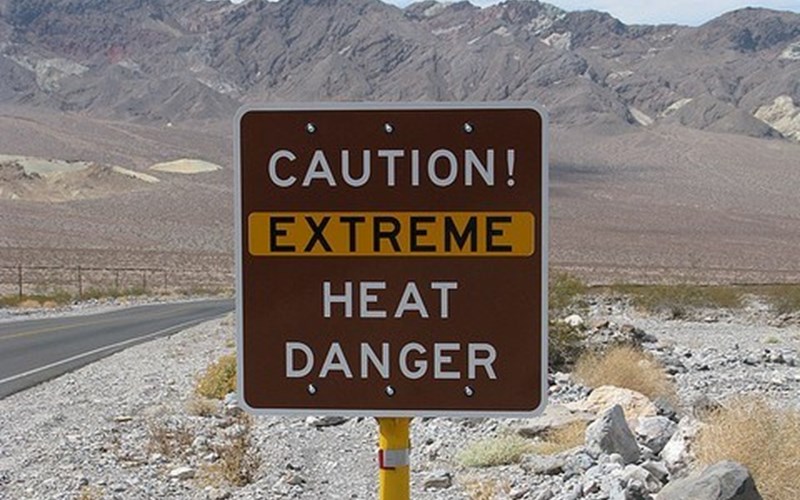Improper mounting. Dirt. Misalignment. Improper lubrication. Corrosion. These are all causes that can lead to bearing failure. We discussed these factors in part 1 and part 2 of our previous posts on the common causes of bearing failure.
In addition to a preventative maintenance plan, we hope this third and final post in our series on causes of bearing failure will give you the information you need to help maximize the life of your bearings.
Photo Credit: “The heat is on!” by marco is licensed under CC BY-ND 2.0
COMMON FACTORS THAT LEAD TO BEARING FAILURE: PART 3
OVERHEATING
Causes: Factors to consider include temperature raised and grease used to lubricate.
High temperatures can cause grease to bleed (purge the oil) which reduces the efficiency of the lubricant. In elevated temperature conditions, oxidation causes loss of lubricating oils from the grease leaving a dry crusty soap that can seize the bearing. Higher temperatures also reduce the hardness of the metal causing early failure.
What to look for: Discoloration of the rings, rolling elements and cages from gold to blue. In extreme cases, the bearing components will deform. Temperature rise can also degrade or destroy lubricant.
How to fix it: Thermal or overload controls, adequate heat paths, and supplemental cooling.
EXCESSIVE LOADS
Causes: Excessive loading of the bearing.
What to look for: Heaving rolling elements wear paths, evidence of overheating, and widespread fatigue areas (spalling).
How to fix it: Reduce the load, or redesign using a bearing with greater capacity.
STORAGE & HANDLING
Causes: Improper storage exposes bearings to dampness and dust. Storing bearings in excessively high temperatures can also degrade grease shelf life—so always check with the original manufacturer of grease for storage specifications. Handling bearings by opening boxes and tearing wrappings prematurely can let in dirt and expose bearings to corrosive elements.
What to look for: Dampness (can cause rust) and/or uncovered bearings in storage area (dust can collect causing contamination).
How to fix it: Store bearings in a dry room, at room temperature. Always cover bearings to keep clean if left out for storage. Always take bearings to the place of installation before unwrapping.
FIT
Cause:
Tight fit: Excessive loading of the rolling element when interference fits exceed the radial clearance at operating temperatures.
Loose fit: Micromotion between fitted parts where the fits are too loose in relation to the acting forces.
What to look for:
Tight fit: a heavy rolling element wear path in the bottom of the raceway. Can cause overheating, and in some cases an inner ring axial crack.
Loose fit: fretting, the generation of fine metal particles which oxidize, leaving a distinctive brown color. Wear at the fitting surfaces causing noise and runout problems.
How to fix it: Make sure proper clearance is selected to avoid fit issues. Refer to the manufacturer’s installation guide.
Our goal is to help you get the most out of your bearings by sharing our knowledge of the industry. If you’re still not sure what’s causing your bearing trouble, or if you need assistance with custom bearing solutions, or even selecting the proper bearing for your application– feel free to contact us.
